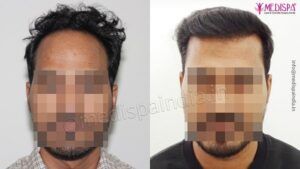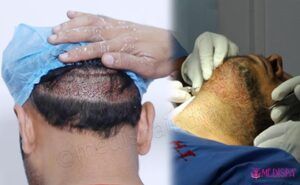
Earlier, hair transplant procedures were not as successful as they are now. In the past, the old methods often resulted in unnatural appearances after the transplant. However, the hair transplant procedure has now become highly successful. In today’s era, it is the most preferred method for treating baldness.
With a hair transplant, you can achieve excellent hair growth that looks completely natural. Furthermore, the hair growth after the transplant is permanent, allowing you to enjoy the results for a lifetime.
In recent times, India has emerged as a popular destination for hair transplants. This is due to the high quality of the procedure offered in the country. Additionally, the affordable cost of the procedure in India attracts people from all over the world.
Hair transplant in Jaipur has gained immense popularity. The city is renowned for its exceptional hair transplant services, with a few doctors being recognized as top professionals worldwide. Moreover, the hair transplant cost in Jaipur has become remarkably affordable.
Medispa hair transplant clinic, operating in both Delhi and Jaipur, is widely acclaimed for its superior hair transplant procedures. We are pioneers in this field, dedicated to providing our patients with the best possible outcomes. Dr. Suneet Soni, one of the world’s leading doctors, is highly regarded for his exceptional skills and artistic approach. He is renowned for creating natural-looking results post hair transplant surgeries.
Hair transplant and importance of hair grafts
Hair transplantation is a minimally invasive surgical technique that involves extracting hair grafts from specific areas of the scalp that have permanent hair roots resistant to DHT and androgenic hormones. These grafts are then transplanted directly into the desired bald area.
To successfully perform a hair transplant, it is crucial to have a sufficient hair density in the donor areas of the body. This ensures that an adequate amount of hair can be transplanted to provide proper coverage. The quality of the hair grafts is determined by the number of hair follicles they contain, which can range from one to four.
GRAFTS EXTRACTION
- This step is considered to be one of the most critical aspects of hair transplant surgery. There are two main techniques used for hair transplant, each distinguished by the method of graft harvesting. These techniques are:
- FUT hair transplant (Follicular unit transplantation or strip technique): This method involves removing a thin strip of skin from the back and sides of the scalp, which is then dissected to obtain individual grafts. These grafts are then transplanted to the recipient area.
- FUE hair transplant (Follicular unit extraction): This technique involves extracting individual grafts from the donor area using a punch-like surgical tool. The extracted grafts are then transplanted to the desired bald area on the recipient.
The selection of the appropriate graft harvesting techniques is a critical aspect of the hair transplant procedure to achieve optimal outcomes. By carefully choosing the right hair transplant technique and having it performed by a skilled surgeon, the results can be long-lasting and beneficial. Factors such as the extent of baldness, the patient’s age and gender, the quality and quantity of hair in the donor area, and the number of grafts needed to cover the donor area all play a significant role in determining the most suitable technique to be used. During the extraction of grafts, the hair density in the donor area is a key consideration as it determines the availability of follicular grafts that can be harvested to cover the balding area. The balding area is evaluated and classified using the Norwood classification system to determine the severity of the baldness. Based on this assessment, the number of follicular grafts needed is determined, which then guides the selection of the appropriate hair transplant technique.
Placement of Hair follicles in Hair transplant
The recipient bald site is prepared for the individual planting of hair follicular grafts after they have been extracted. This preparation involves a procedure called slitting, which is performed by experts to achieve natural results. The slitting procedure takes into account the hairline design based on the patient’s age, sex, requirements, and professional needs, in order to achieve the desired aesthetic outcome. It is important to maintain the proper angle and direction of the hair grafts in the front line and temporal triangles to replicate a natural appearance. Skilled surgeons play a vital role in ensuring that the implantation site is prepared properly for natural and undetectable results.
How to get hair transplant with less graft damage?
The hair transplant procedure is a delicate operation that involves extracting and replanting highly sensitive hair roots. Each step must be executed with precision. To ensure the preservation of as many hair roots as possible, it is crucial that the procedure is performed by trained professionals. There are various strategies to prevent damage to the hair roots, such as:
- Choosing the optimal donor area for the hair transplant: It is essential to select the right donor area, ensuring that only the necessary amount of hair is removed. Over-extraction may jeopardize the safe zones and result in the death of hair roots.
- Engaging a skilled surgeon to conduct the procedure: The expertise of the surgeon plays a vital role in promoting healthy hair growth and minimizing damage to the hair roots.
- Selecting the appropriate hair transplant technique: The choice of technique should be based on the extent of hair loss to maximize the survival of hair roots and reduce potential harm.
Following a hair transplant procedure, it is essential to prioritize healthy hair growth and a natural look. Ensuring this outcome requires careful consideration of the service quality. Make an appointment at the Medispa clinic in Delhi or Jaipur today to arrange a consultation.







